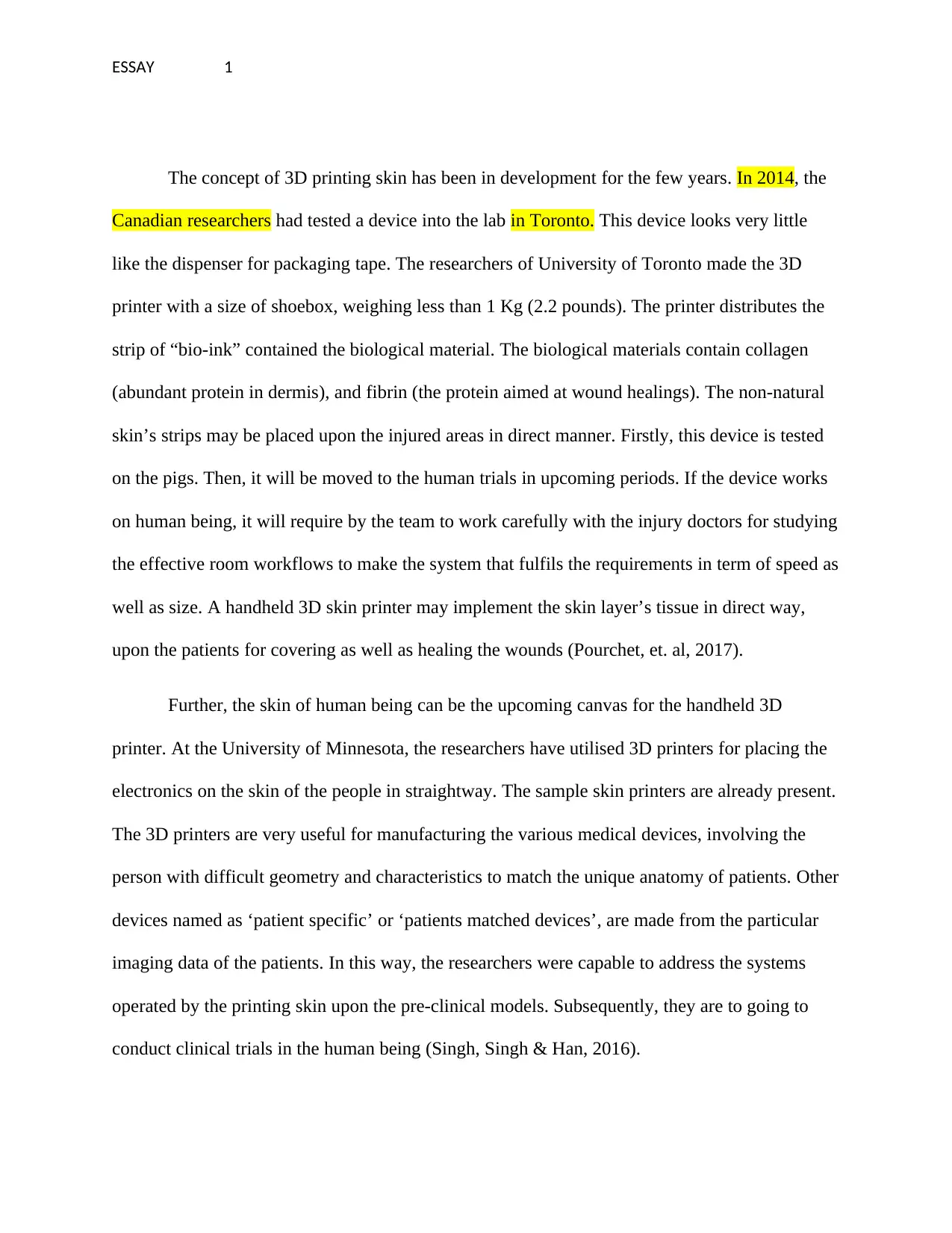The Role of 3D Printing in Skin Tissue Engineering: A Report
VerifiedAdded on 2022/10/11
|3
|497
|14
Report
AI Summary
This report delves into the application of 3D printing in the realm of skin tissue engineering. It discusses the development of 3D printers, specifically focusing on the use of bio-inks like collagen and fibrin for creating skin grafts. The report highlights the work of researchers, including their experiments on animal models and plans for human trials. It also explores the potential of handheld 3D printers for direct skin application and the use of patient-specific devices. The report references research conducted at the University of Toronto and the University of Minnesota, emphasizing the potential of 3D printing to revolutionize wound healing and medical device manufacturing. The report concludes with a look at the future of skin tissue engineering, emphasizing the advancements in bioprinting and the impact of this technology on healthcare.
1 out of 3




![[object Object]](/_next/static/media/star-bottom.7253800d.svg)